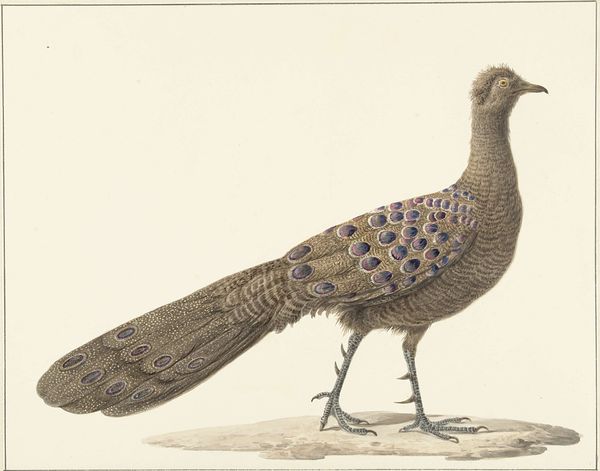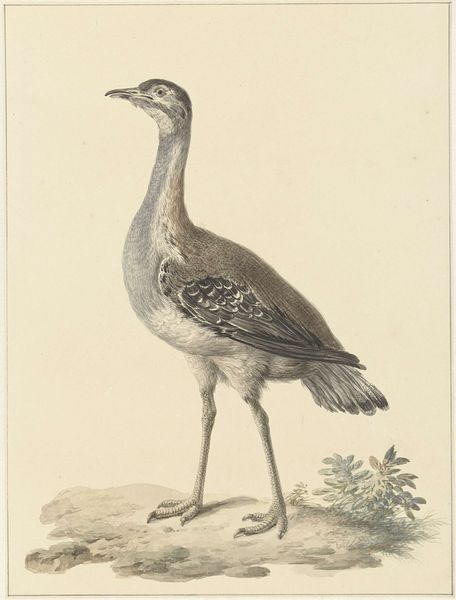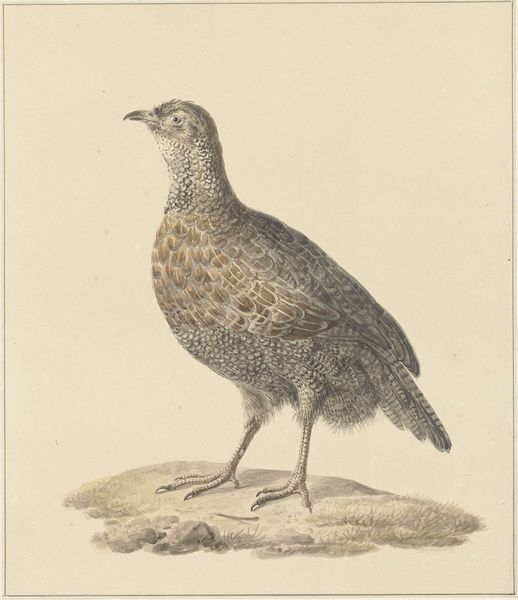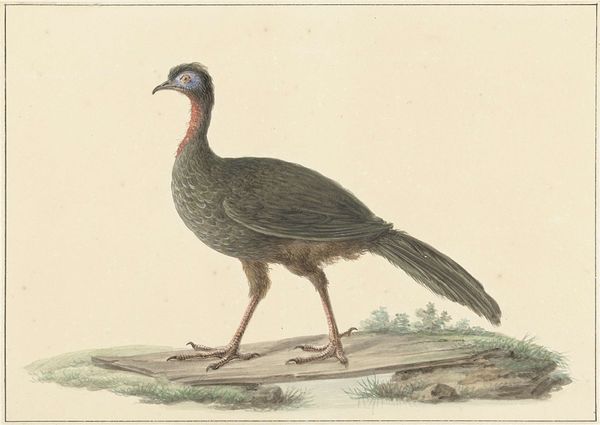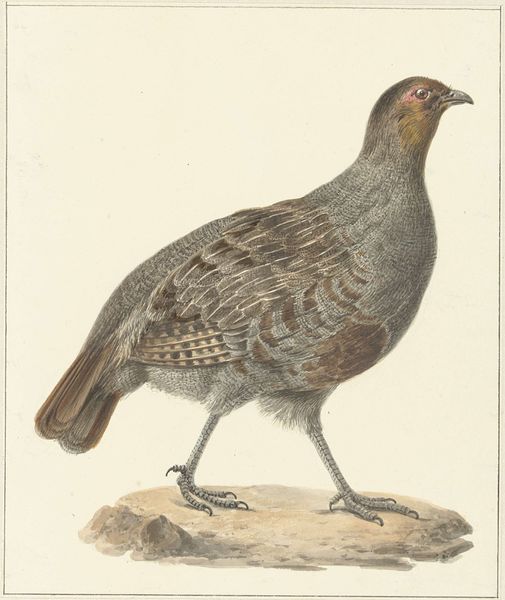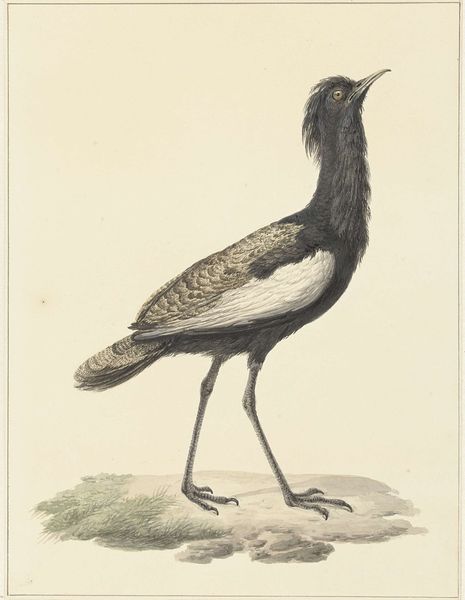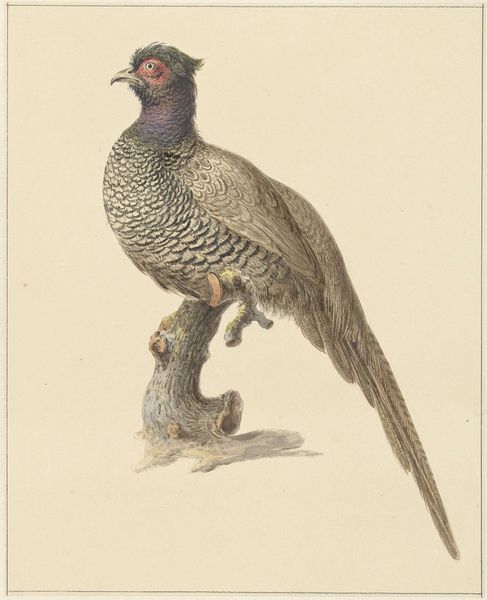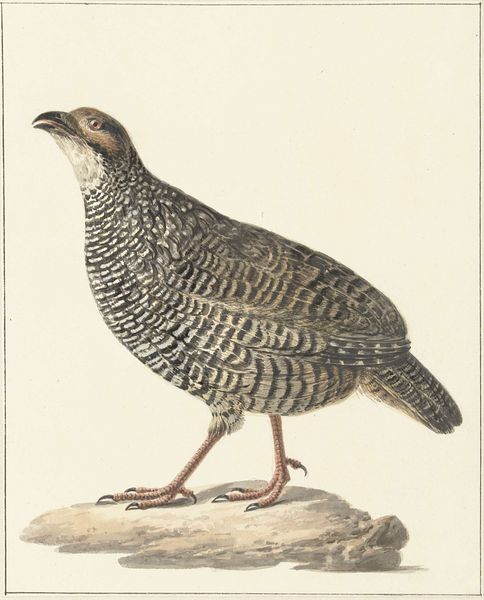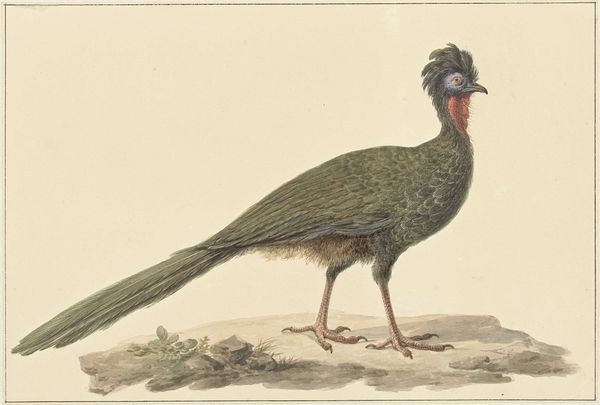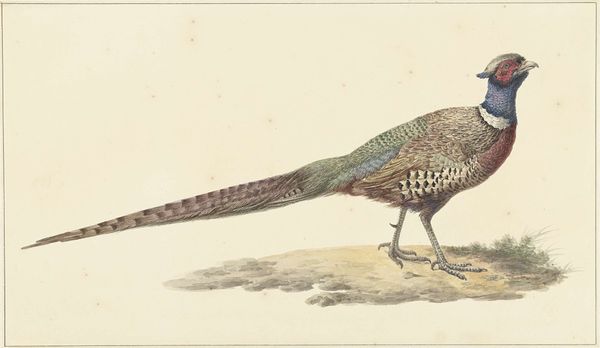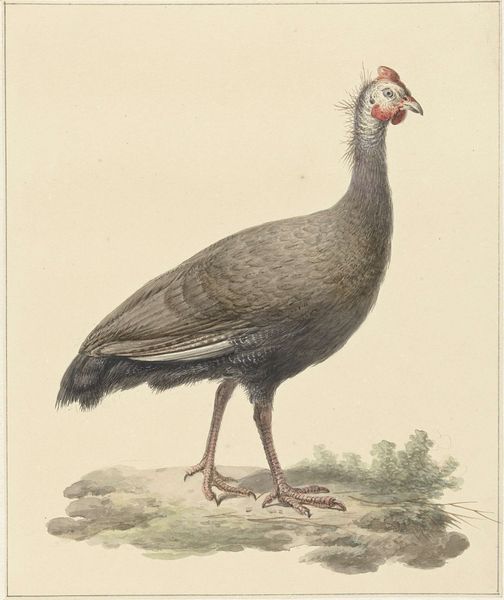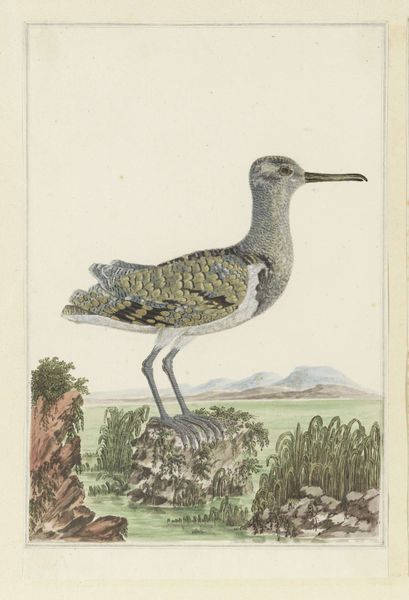
drawing
#
portrait
#
naturalistic theme
#
drawing
#
botanical illustration
#
figuration
#
animal drawing portrait
#
realism
Dimensions: height 268 mm, width 324 mm
Copyright: Rijks Museum: Open Domain
Curator: Here we have “Spiegelpauw,” an exquisite drawing of a peacock executed sometime between 1759 and 1842 by Pieter Pietersz. Barbiers. Editor: Wow, it's like… melancholy captured in bird form. The muted colors, the serious pose… feels a bit like a Victorian portrait of a very proper, slightly world-weary aunt. Curator: Indeed, there’s a certain realism in its depiction which mirrors aspects of the Victorian era. However, it is also quite characteristic of Naturalism, considering the work is positioned in an important period of development within the field of ornithology, when observation and accurate depiction were valued in science and art. Editor: Naturalism for sure, but with a heavy dose of personality. The way the light catches those… eye-spots, on its plumage… it’s almost gothic. And those thorny legs! Nature's punk rock. Curator: The meticulous detailing, particularly on those "thorny legs" as you've so aptly put it, speaks volumes about the artist's skill, rooted in precise scientific observation that does lend a certain hyperrealism, characteristic of animal drawing portraits of the era. I think in examining Pieter Barbiers’ depiction, we can understand how social perspectives and scientific advancements played in to aesthetic tastes. Editor: It also makes me think about our obsession with categorizing, labeling, "scientifically observing" everything. I wonder if the bird itself would appreciate being so thoroughly documented. Does it feel seen, or simply dissected by our gaze? Curator: That’s a profound consideration. Often, the pursuit of knowledge risks objectifying its subject. But it also gave the image greater appeal among a certain segment of art audiences at the time, because people found a certain thrill in feeling connected to natural science via cultural production like this peacock drawing. Editor: Right, a sort of…"armchair naturalist" experience. So, in the end, we’re left with more than just an illustration. It's an intersection of art, science, and social yearning—a little window into a bygone way of seeing… and documenting the world. Curator: Exactly. By juxtaposing it with the rise of taxonomic classification, we gain insight into how humans grapple with their place in the natural world, then, and now.
Comments
No comments
Be the first to comment and join the conversation on the ultimate creative platform.
